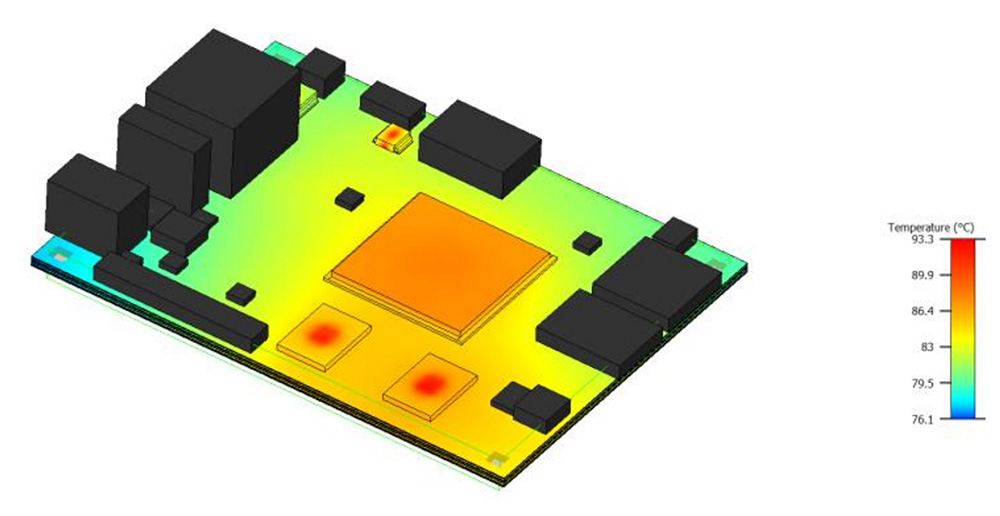Today’s electronics often have heat-dissipation challenges that need to be resolved during design due to higher power density influenced by the miniaturization of semiconductor packages and electronic systems, trends for thin-form consumer products, or demanding processing requirements. As a result, the need is growing for more detailed thermal models to help solve thermal management design tasks. Increasingly, modern IC package architectures such as 2.5D, 3D IC, or chiplet-based designs have highly complex thermal management challenges that require 3D thermal simulation both during their development and during integration of IC packages into electronics products.

3D PCB thermal analysis surface temperature results using reduced order embeddable BCI-ROM component models in Simcenter Flotherm CFD software
However, someone has to pay for this content. And that’s where advertising comes in. Most people consider ads a nuisance, but they do serve a useful function besides allowing media companies to stay afloat. They keep you aware of new products and services relevant to your industry. All ads in Quality Digest apply directly to products and services that most of our readers need. You won’t see automobile or health supplement ads.
Published: Thursday, February 8, 2024 – 12:00
Our PROMISE: Quality Digest only displays static ads that never overlay or cover up content. They never get in your way. They are there for you to read, or not.
Learn more about Siemens’ embeddable BCI-ROM technology and how it can enable more efficient and secure collaboration.
منبع: https://www.qualitydigest.com/inside/quality-insider-news/siemens-brings-secure-thermal-digital-twin-electronics-supply-chain
Quality Digest does not charge readers for its content. We believe that industry news is important for you to do your job, and Quality Digest supports businesses of all types.
(Siemens Digital Industries Software: Plano, TX) — Siemens Digital Industries Software has announced an innovative approach for sharing accurate thermal models of integrated circuit (IC) packages to the electronics supply chain. The main advantages are protecting intellectual property, enhancing supply chain collaboration, and accuracy of models for steady-state and transient thermal analysis to enhance design studies.
Introduced in the latest updates to Simcenter Flotherm software for electronics cooling simulation from the Siemens Xcelerator portfolio of industry software, the breakthrough Embeddable Boundary Condition Independent Reduced Order Model (BCI-ROM) technology allows a semiconductor company to generate an accurate model that can be shared with clients for use in downstream, high-fidelity 3D thermal analysis without exposing the IC’s internal physical structure.
So please consider turning off your ad blocker for our site.
Quality Insider
Siemens Brings Secure Thermal Digital Twin to Electronics Supply Chain
Provides reduced order models for the 3D CFD thermal simulation
“Given electronics supply chain pressures and the growing complexity of IC packages, barriers to collaboration and thermal analysis efficiency during design must be eliminated where possible to support competitive development,” says Jean-Claude Ercolanelli, senior vice president for simulation and test solutions at Siemens Digital Industries Software. “Our breakthrough new technology enables accurate thermal models to be shared securely within the electronics supply chain without exposing sensitive intellectual property, allowing all parties to resolve thermal issues faster and bring advanced products to market more quickly.”
MediaTek Inc., a global fabless semiconductor company and market leader in developing innovative systems-on-chip (SoC) for mobile, home entertainment, connectivity, and internet of things (IoT) products, has taken advantage of Simcenter Flotherm to drive efficiency in its collaboration with customers. “Embeddable BCI-ROM is a great way to share our thermal models with our customers. It has several key features: easy generation, confidentiality, low error rate, and suitability for steady-state and transient applications,” says Jimmy Lin, technical manager at MediaTek.
